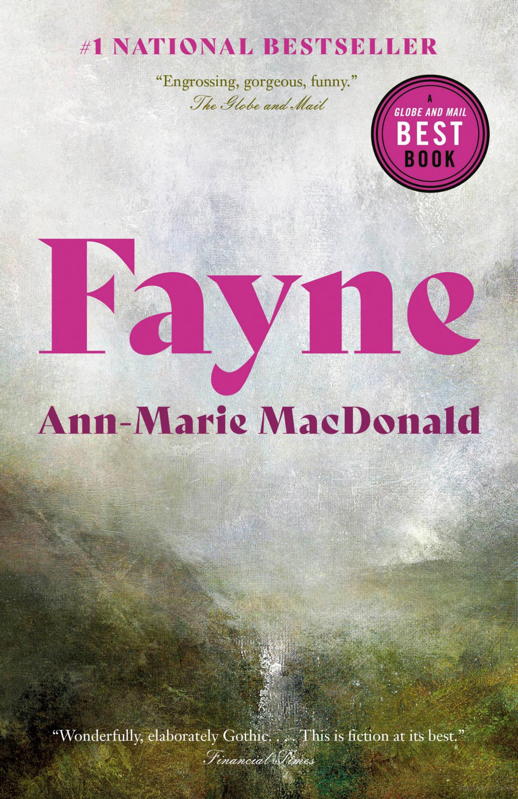
Ann-Marie MacDonald is a household name in my neck of the woods — a celebrated Canadian author and playwright with contributions across genres for contemporary queer audiences. From her first sapphic characters in the devastating Cape Breton book Fall on Your Knees, to Romeo and Juliet’s love-struck cross-dressing in her playwriting debut Goodnight Desdemona (Good Morning Juliet), her newest novel is no different. A Gothic and historical adventure of over 700 pages, Fayne follows one remarkable character on her journey of identity.
In the late 19th century, “no longer a child, not yet a woman”, the Honourable Charlotte Bell has grown up on the isolated estate of Fayne, nestled between England and Scotland. Fayne exists as a ley line of sorts, separate from the outside world. An in-between place. Within it, Charlotte masters a balancing act. On one hand, she devours scientific concepts with her father, Lord Henry Bell, inheriting from him her societal status and a love of learning. But Charlotte is also taught mythology and lessons in the ‘Old Ways’ from the staff at Fayne. “Dinnae lock eyes with a wild hare lest he carry the sight of you to Faery”, her nurse has warned.
This merging of worlds hints to core themes in the novel: the moor (not one environment but a “shifting array of boggy expanses”), the taxidermy creature-of-many-species that Henry constructs in his study. Even Charlotte herself, as someone leaving childhood behind—there are many joyful instances of in-betweenness throughout the book. Charlotte has been isolated in her childhood, and, believing it due to a weakened immune system, is shocked to discover this is a lie. She was born, in fact, with an intersex trait, and believes every girl has a body like hers. But there comes a time where the truth, and the world outside Fayne, can’t be ignored… for better or for worse.
Despite the shifting pressures of a rigid outside society, fielding her own self-doubts and intergenerational traumas, Charlotte remains determined to follow her dreams. While learning her family’s history, specifically the truth about her deceased mother and baby brother, she explores her gender identity, morals, and sexuality in a society determined to fit her into a mold.
This novel is absolutely full of blurred lines: heartbreaking and hopeful, realistically complex yet fantastical, exploring past and present through Edinburgh and the Fayne estate. The book uses common tropes like the Gothic and Victorian drama, complete with forgotten letters in false-bottom beds and potentially prophetic dreams. But this is no simple period piece. Like the moors, Fayne is rich in layers, each teeming with life and deeply interconnected. If you have the time, this novel absolutely rewards its readers: Charlotte reminds us to relish the miracle of our own identities.

